There are so many ways to look at India. It could be either nature or architecture or food or textile travel across India. During the course of our various trips, we have seen floor decorative art practices in India that are typical to various regions of the country.
To our plain eyes, it is a lovely way to decorate a space. To uplift a zone from mundane to festive or divine. But the eye-catching designs say stories of their own. It is like cultural travel in India tracing different forms of floor paintings.
What are the names of Indian floor paintings?
Would you believe that wall art or floor art in India is a practice that started as early as the Stone Age? The cave paintings in Bhimbetka, Madhya Pradesh depict animals, humans, their weapons, dancers, and trees. The beginning of such art was votive in nature to highlight items and objects of aspiration.
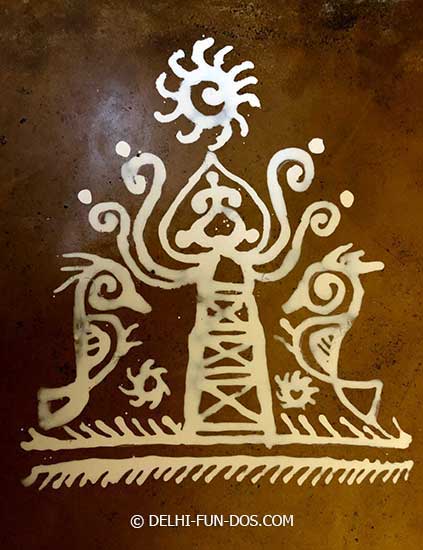
The earliest traces of floor art can be traced back to Mohenjodaro. The seals carried floor decorations that would have prevailed in that era. In the Vedic era, ritual arts developed further integrating art practices from earlier times into a stricter design paradigm. Some of these design rituals are practised even now, perhaps daily, in various parts of India under different names.
Floor painting in Rajasthan is called Mandana, in Maharashtra, it is Rangoli, in Bihar it is called Aripana, in Bengal it is Alpona and in Tamil Nadu, it is Kolam. We are sharing our experiences regarding some of these art forms that we have come across in the course of our travel. This post, by no means, is exhaustive. As and when we travel to new places and come across more styles, we shall update here.
Alpona
The Sanskrit word for floor art is “Alimpan”. The Bengali derivative of Alimpan is Alponaor Alpana. Traditionally Alpona was painted on the floor with rice paste that was applied with fingers. A small piece of cloth or cotton was soaked with the rice paste and pressed between the thumb and middle finger. The rice paste paint would then drip from the middle finger creating patterns on the floor and occasionally on the wall. The colour would always be white.
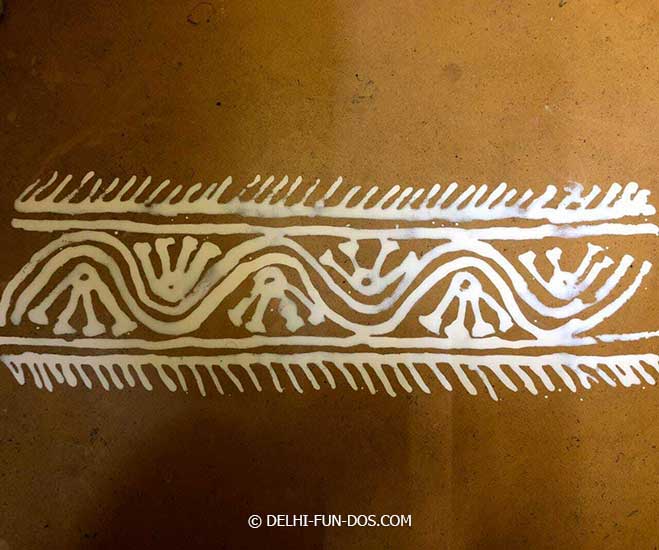
Alpona would have ritualistic significance. Specific designs such as footmarks of Gods would be used for specific festivals or worship. Women with an artistic bent of mind would draw floral or geometric patterns to enhance the chief design. Sometimes, prayers or aspirations would also be painted on the floor as a means of manifestation. For example, a woman desiring a gold necklace or a bangle would paint that on the floor. The aesthetic angle would be secondary. Yet, in the process of ritualistic Alpona, the floor, and surroundings would achieve a new level of beauty.
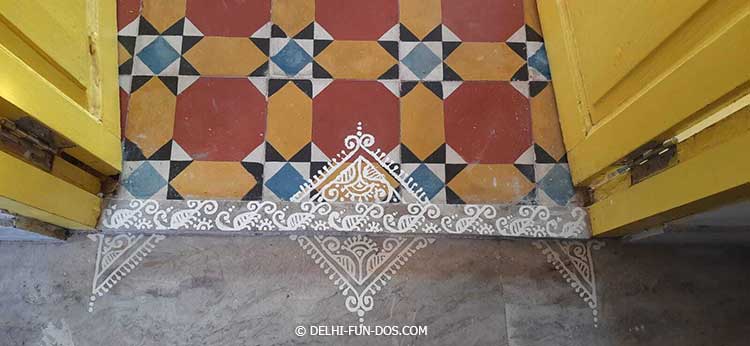
Over time, the aesthetic angle of Alpona gained precedence. The new approach to Alpona was brought about by none other than Gurudev Rabindranath Tagore. He noticed the beautiful Alpona during the course of his travel through villages of Bengal. He introduced Alpona in Shantiniketan and senior teachers like Nandalal Bose and many students developed Alpona as an artistic language. They introduced brush strokes and colours to Alpona. From our experience, the ritualistic form, as well as the decorative form, thrive happily in Bengal now.

Bedabrata making Alpona on Saraswati Puja
Bedabrata is an Alpona enthusiast. Be it Saraswati Puja or any other festival in Kolkata, you may find him pottering around with his brushes, cotton balls, and chalk powder looking for any opportunity to practice his Alpona skills.
Aripana
Aripana is the ritualistic folk painting form that prevails in Bihar. The word Aripana can also be traced to the Sanskrit word “Alimpan”. Like Alimpan, Aripana has ritualistic significance.
Aripana and Alpona have many commonalities probably because Bihar and Bengal are neighbours. Like Alpona, Aripana is also painted directly on the surface with rice paste which is applied by finger. Thresholds, courtyards, and walls would be decorated before any ritual or festival with Aripana. The elaborate designs would bring the dull surfaces to life.
PIN IT FOR LATER READ

Aripana designs are guided by tradition. Ritualistic patterns like mandalas and yantras are painted depending on the event. Flowers, particularly the lotus is a favourite motif in Aripana. Trees, animals, and even humans would be depicted sometimes. The prevalent colour is white from rice paste with red dots drawn with Sindoor. Other colours are also used now.
Jhoti Chita
Odisha arts and crafts have a long heritage of Hindu, Buddhist, and Jain influences. As we see in Pattachitra from Raghurajpur, the paintings of Odisha are classical in design and an evolved form of art. Jhoti Chita (Chita derived from Chitra or painting) is the traditional floor art form of Odisha. Chita is painted with cloth of cotton balls instead of a brush. The paint is rice powder paste. Hence the final painting shines in a dazzling white colour.

Chita designs are very refined. The patterns are symmetric to a fault. It is tough to believe this is a free-hand process. Odisha floor paintings have ritualistic significance. The common designs include foot prints of Gods, flowers, wreaths, lotus, conch shell or shankh, and similar motifs from everyday life. Such paintings are still are a regular affair in temples and village households. Festivals are a time when city apartments also display a neat Jhoti at the threshold. There is nothing like good floor art to brighten any surroundings.
Aipan
Aipan is a ritualistic painting found in the hills of Uttarakhand. It is said to have originated in Almora during the Chand dynasty. The word Aipan is also a derivative of the Sanskrit word “Alimpan”.
Aipan is traditionally painted with a paste made with rice flour. The prevalent colour of this art is consequently white. However, during our travels in Uttarakhand especially Shitlakhet, Almora, Ranikhet, Kasar Devi, etc, we have seen Aipan applied on a rust colour base. The base is probably laid with red oxide rich or geri mitti. The white art on the dull red base looks striking.
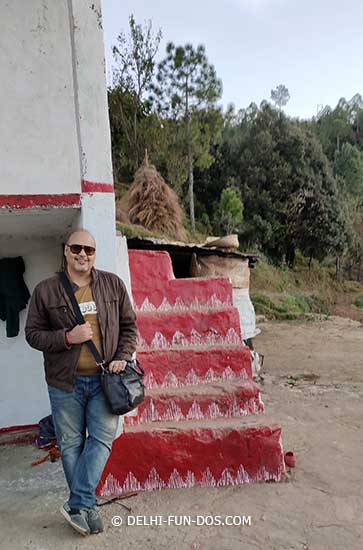
Traditional Aipan Art on the steps of a home in Uttarakhand
Aipan is drawn at thresholds and in front of the worship rooms. It gives the zone an aesthetic divinity. Though traditionally done by women only, we were fortunate to have attended an Aipan workshop in a Jim Corbett resort where both, men and women could practice and enjoy this art form. Rice paste was replaced by poster colour and we painted on a steel plate with oil colors. The result is here for you to see. We take a humble bow 🙂
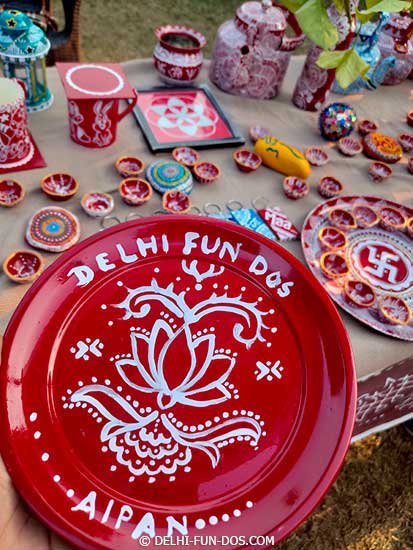
Aipan art workshop in Uttarakhand
Kolam
From up North we now head to South India. The states of Tamil Nadu, Kerala, Karnataka, and Andhra Pradesh practise a form of floor art – Kolam. Kolams are ritualistic designs created on the floor not only during festivals but also every day in thousands of households.
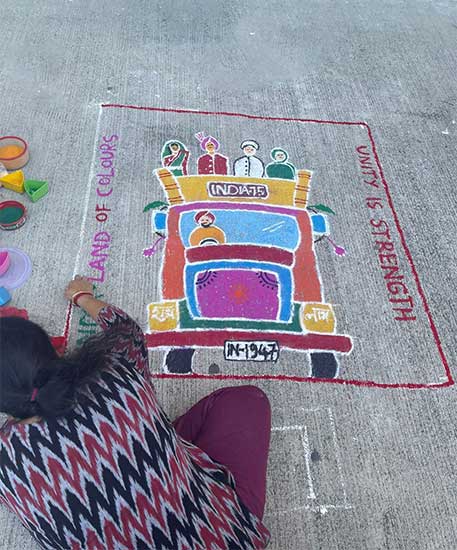
In fact, this is a popular way of ushering in the day every morning. The women of a household would clean and mop the threshold and the floor around the altar. Kolam designs would be created on the wet surface. During our trip to Kerala, we saw brass lamps also lit at the threshold early morning.
Kolam is mostly done with rice powder (not rice paste) that is skilfully sprinkled on the floor based on the design. The wet surface would help to hold the design better. Kolam designs are mostly web-like patterns created with lines and dots. There could be short cursory designs or elaborate intricate designs depending on the festival and the skill of the artist.
The interesting part about Kolam is that its purpose is not decorative. A beautiful threshold is said to attract Lakshmi, the Goddess of wealth in Hindu mythology.
In addition, the dry rice powder is meant to serve as food for ants, other insects, and even birds. What a poignant way to welcome nature into the household we say!
Rangoli
This is perhaps the most popular form of Indian floor painting that most of us are familiar with. Given the Indian diaspora spread all across the world, as well as the popularity of Bollywood overseas, Rangoli is known by art and culture enthusiasts in other countries too.
The name Rangoli has been coined from the Sanskrit word “Rang” which means colour. The Sanskrit word for Rangoli is “Rangavalli” which means a collection of colours. Rangoli is traditionally practised from Maharashtra up to all the Northern states.
Like Kolam, Rangolis are also drawn by craftily sprinkling coloured powder. Rangolis with flower petals are also popular. There is no fixed pattern and any pretty motif can be used on a Rangoli. Flowers, birds, and peacocks are frequently seen in designs. Festival-specific motifs are also used. For example, Lord Ganesh or the Indian oil lamp diya is created during the festival of Deepawali.
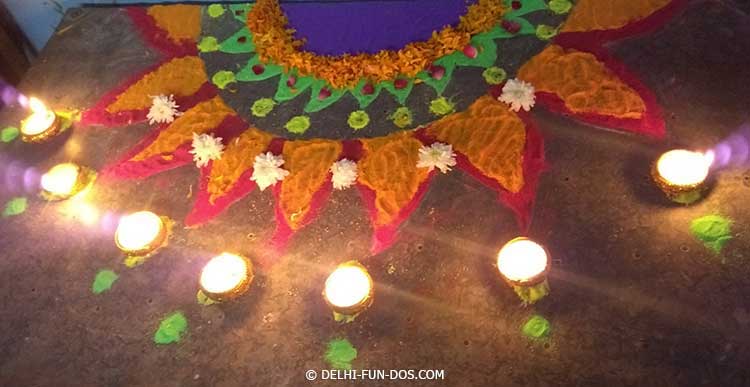
Rangoli for Diwali Festival
Painting a Rangoli may have been a regular affair in earlier years. However, in present times, Rangolis are created during festivals, especially Deepawali, to welcome the Gods. That said, we have seen some beautiful Rangolis, mostly with flowers and petals in auditoriums holding music, dance, or other cultural event or at art galleries. In our experience, a well-made Rangoli can excite as well as calm the viewer at the same time.
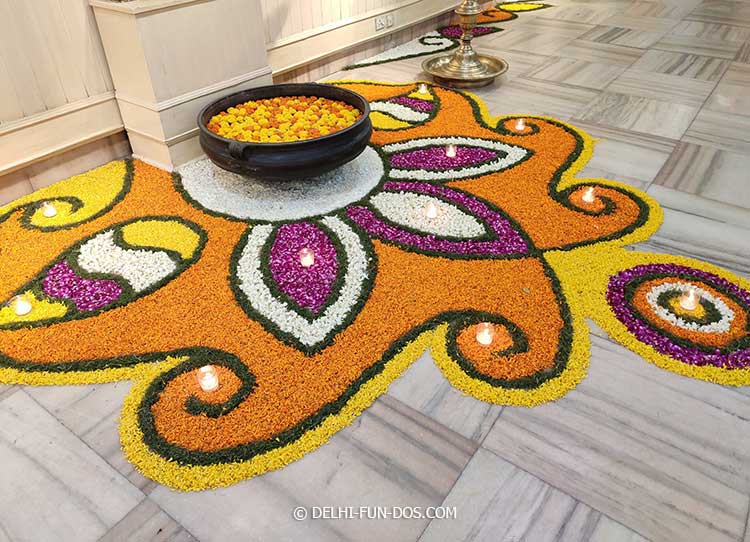
Rangoli made of flowers
That is perhaps the beauty of traditional hand-created artwork. While plastic Rangoli or Kolam stickers or stencils for Rangoli are in high demand during festivals, there is still a large number of people not only in India but also across the globe, who create some style of folk art using their hands. Hence, we believe that this practice which has survived for over 3000 years, since the times of Rig Veda is going to somehow maintain its presence in our busy mechanised lives.
If you have not tried your hand at floor art, this could be a welcome change. During the next festival, you can give your gaudy fairy lights a break and create a Rangoli, Alpona or Kolam. There is a lot of help and tutorials available on the internet. The art you create would not only beautify your threshold but probably make you feel great about yourself.

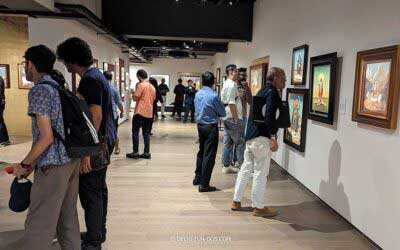

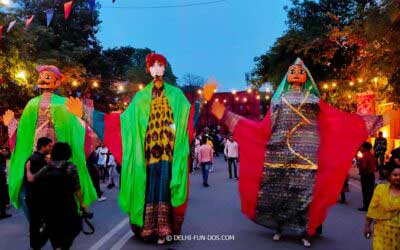
I would love to see these in person! Such beautiful designs!
My mom is an Alpona enthusiast. However she being in the North for over 35 years now has converted her into a Rangoli person. Basically we have floor art in all parts of India under different names. Unity in diversity. And I am not surprised that it was found in Mohenjodaro too! Our ancestors taught us!
Nnniiiccceeeee….I didn’t know there were names of floor paintings in India! These are very intrinsic designs out here. Thanks for elaborating them.
So lovely! I really enjoy how artful and colorful Indian culture is. There’s always creativity and usually an element of symmetry. Beautiful!
Symmetry is the core of Indian floor art.
What pretty floor paintings. It is nice that this is a tradition there. We enjoy traveling and seeing art around the world. These are beautiful designs.
Floor painting and its various forms are such an integral part of Indian culture. In the south, one of the common sights used to be that of women cleaning their front yards and decorating them with rangoli designs, every day. There is such a deep meaning to this fascinating practice. Sandy n Vyjay
Art in life as we say!
Very beautiful, interesting, and artistic. I think of applying those paintings on my house’s floor after reading your post.